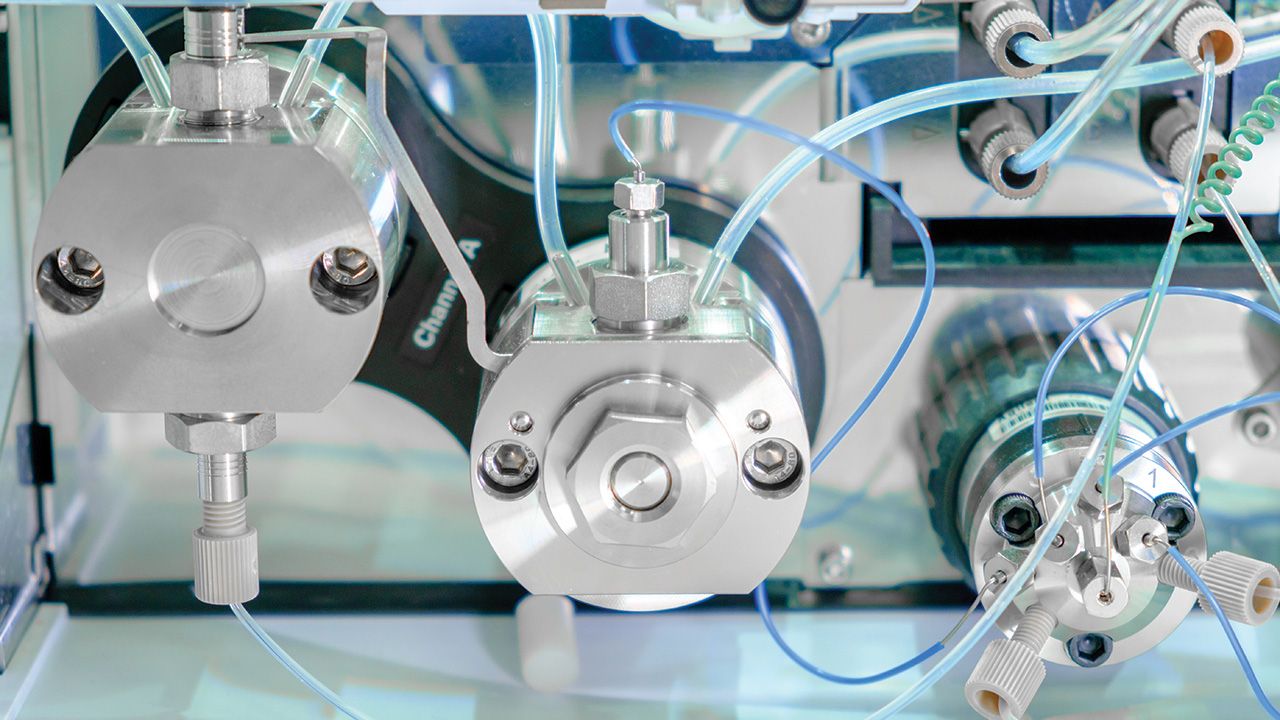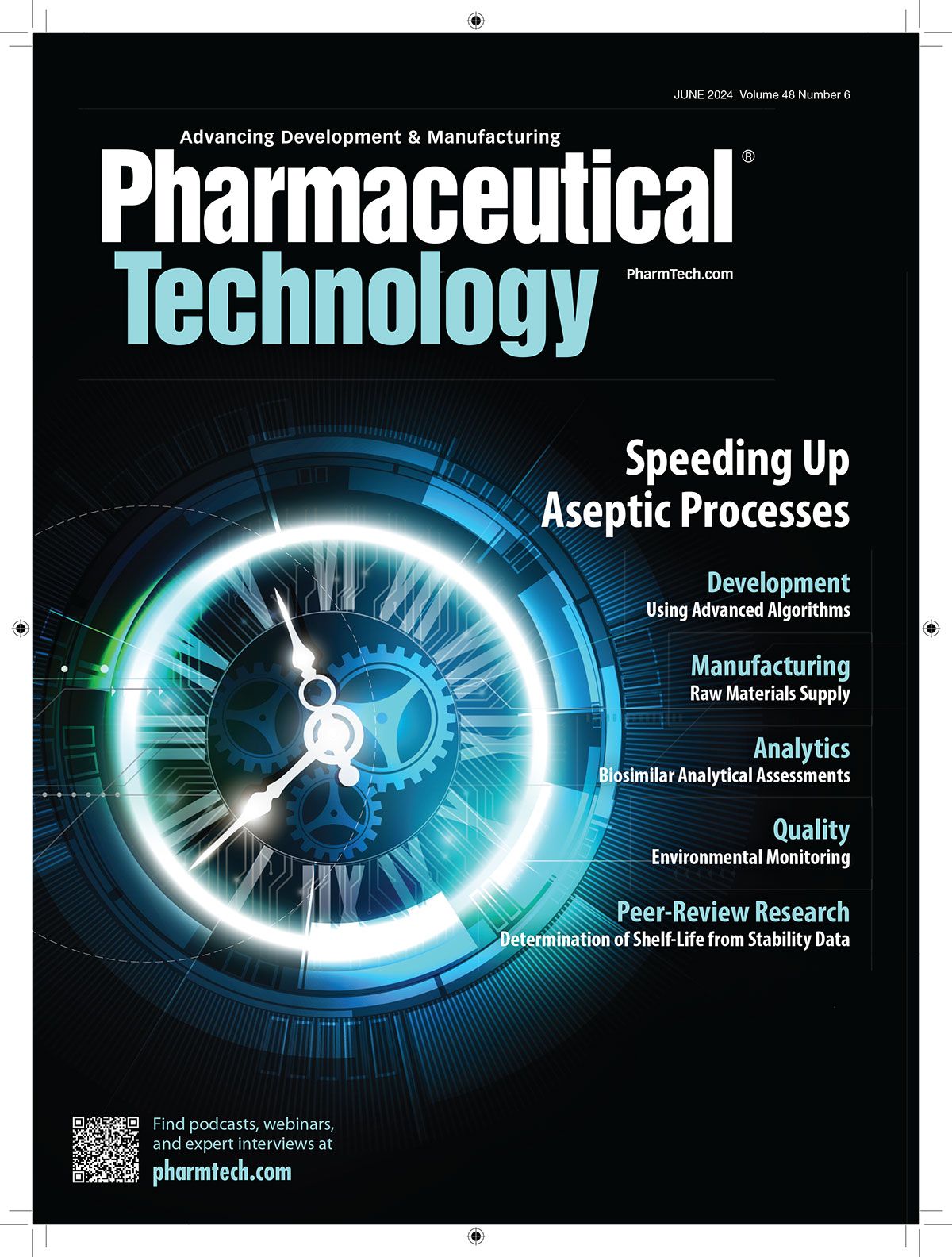Editor’s note: this article was published in the Pharmaceutical Technology Europe June 2024 issue.
Evaluating the Use of Continuous Chromatography
The biopharma industry is looking at continuous chromatography for sensitive molecules.
vladim_ka - stock.adobe.com

Continuous processes continue to advance in bioprocessing. In downstream processing, continuous chromatography is gaining traction in the purification of protein therapeutics. As the biopharmaceutical industry strives to demonstrate, continuous manufacturing offers the benefits of higher productivity and better product quality than traditional batch manufacturing. In addition, continuous processing intensifies production and lowers capital costs, while enabling better control (1).
Although significant strides have been made to advance continuous upstream processing, downstream processing has not advanced at the same pace. However, according to Gerstweiler et al., “Research on continuous chromatographic purification for antibodies is maturing, and work has commenced on other unit operations and on process system integration” (1).
Somasundaram et al. had earlier noted that “Rapid advances in intensifying upstream processes for biologics production have left downstream processing as a bottleneck in the manufacturing scheme” (2). But to increase efficiency and promote flexibility, biomanufacturers are looking to implement continuous downstream process development. However, despite successful laboratory trials, it has remained difficult to achieve continuous downstream processing at commercial manufacturing scale.
Perhaps another challenging aspect with continuous downstream processing is the ability to implement process control strategies. Advances in process analytical technologies and modeling techniques, however, may provide solutions to improving chromatography control for industrial-scale manufacturing (3). These advances offer opportunities to enhance process robustness, increase productivity and move towards real-time release testing.
It has been previously noted that process optimization and controlling the steps in downstream chromatography contributes to increased consistency of product quality as well as better management of process variability. In addition, control of the downstream processing steps can lead to cost reductions (3). However, the biopharma industry needs to enhance monitoring and control strategies to realize these benefits as current chromatography control strategies remain limited, leading to sub-optimal processing operations. Ultimately, this limitation in control strategies leads to delays in purification for new therapeutic molecules (3).
Taking a closer look
In speaking with Pharmaceutical Technology EuropeTM, Christine Rozanas, PhD, global product marketing manager at Cytiva, discussed the advantages and persistent challenges with implementing continuous downstream chromatography.
PTE: What is continuous chromatography, and how has it improved downstream bioprocessing?
Rozanas (Cytiva): Continuous chromatography differs from traditional ‘batch’ chromatography in two key ways: the chromatography system can be loaded continuously, which is a useful approach when the purification step is connected to an upstream perfusion or fed-batch bioreactor, and, by having two or more columns in the loading zone, you can overload the first column [because] any product/target molecule that is breaking through is being captured by the second column in the loading zone. When used with a perfusion or fed-batch bioreactor, continuous chromatography can help reduce the amount of resins and buffers needed. It also provides greater flexibility for processes and uses a smaller footprint in a manufacturing facility.
PTE: What are the benefits of using a continuous chromatography process in downstream bioprocessing?
Rozanas (Cytiva): Compared with batch operations, continuous chromatography can offer significant productivity gains and increased production capacity, for example, through increased utilization of chromatography resin binding capacity, reduced buffer usage, and smaller column size.
PTE: What have been the major drawbacks or challenges to using continuous chromatography in downstream bioprocessing?
Rozanas (Cytiva): Despite the benefits, the industry has been to slow to adopt continuous chromatography in downstream bioprocessing for a number of reasons. It can be a more complicated set up compared to a traditional batch process, and, while batch chromatography is done over a single shift or sometimes over 24 hours, the larger volumes processed continuously from perfusion or fed-batch bioreactors must be processed over several weeks or up to a month. [This] can make it more difficult to trace any potential issues that might occur. While regulatory agencies express interest in supporting the use of continuous processing, many companies continue to develop batch purifications first, before evaluating whether a continuous chromatography process would significantly reduce production costs or increase productivity and output.
Multi-column continuous chromatography
PTE: How does multi-column continuous chromatography work, and in what scenarios would a biomanufacturer opt to implement this?
Rozanas (Cytiva): For multi-column chromatography, the large capture column is split into multiple smaller columns that alternate in binding and elution operations in multiple cycles to process the feed from the upstream bioreactor. It can be a great option when working with sensitive molecules, where continuously removing the molecule from a potentially harmful environment into the first purification step can be the only viable option. In scenarios where there is a limited product demand (in kg), continuous chromatography can also allow significant reduction of the needed resin volume through running a higher number of cycles in the available time and thus reducing the column size.
Enabling adoption
PTE: What key innovations have been instrumental in promoting the use or adoption of continuous chromatography?
Rozanas (Cytiva): [Some] continuous chromatography systems use controls (e.g., dynamic ultraviolet control, as with Cytiva’s systems) that enable real-time monitoring and control of the process. In Cytiva’s case, its system can adjust accordingly to changes in feed concentration, for example, to optimize processing of the perfusion output. Also, pre-packed columns have provided greater consistency and quality of the internal conditions of each column so that the feed is processed in the exact same way in the alternating columns during the continuous run.
References
1. Gerstweiler,L.; Bi, J.; Middelberg, A. P. J. Continuous Downstream Bioprocessing for Intensified Manufacture of Biopharmaceuticals and Antibodies. Chem. Eng. Sci. 2021, 231, 116272. DOI: 10.1016/j.ces.2020.116272
2. Somasundaram, B.; Pleitt, K.; Shave, E.; Baker, K.; Lua, L. H. L. Progression of Continuous Downstream Processing of Monoclonal Antibodies: Current Trends and Challenges. Biotechnol. Bioeng. 2018, 115 (12), 2893–2907. DOI: 10.1002/bit.26812
3. Armstrong, A.; Horry, K.; Cui, T.; et al. Advanced Control Strategies for Bioprocess Chromatography: Challenges and Opportunities for Intensified Processes and Next Generation Products. J. Chromatogr. A 2021, 1639, 461914. DOI: 10.1016/j.chroma.2021.461914
About the author
Feliza Mirasol is the science editor for Pharmaceutical Technology Europe®.
Article details
Pharmaceutical Technology Europe®
Vol. 36, No. 6
June 2024
Pages: 30–31
Citation
When referring to this article, please cite it as Mirasol, F. Evaluating the Use of Continuous Chromatography. Pharmaceutical Technology Europe 2024, 36 (6) 30–31.

Drug Solutions Podcast: A Closer Look at mRNA in Oncology and Vaccines
April 30th 2024In this episode fo the Drug Solutions Podcast, etherna’s vice-president of Technology and Innovation, Stefaan De Koker, discusses the merits and challenges of using mRNA as the foundation for therapeutics in oncology as well as for vaccines.